The Moon Valley Pilea is one groovy plant.
Famous for its radiant green leaves and bold venation, anywhere from jet black to a rich amber color.
It’s a bold fashion moment that shouldn’t work but totally does.
Not only will its daring aesthetics impress your friends, but as a member of the ‘friendship plant’ Pilea family (named after their willingness to propagate), you can dish out cuttings so everyone can enjoy the houseplant magic for themselves.
It’s a gem to look after once you know how, so stick with me, and I’ll let you in on all my Pilea mollis secrets…
Ready, set, blast off!
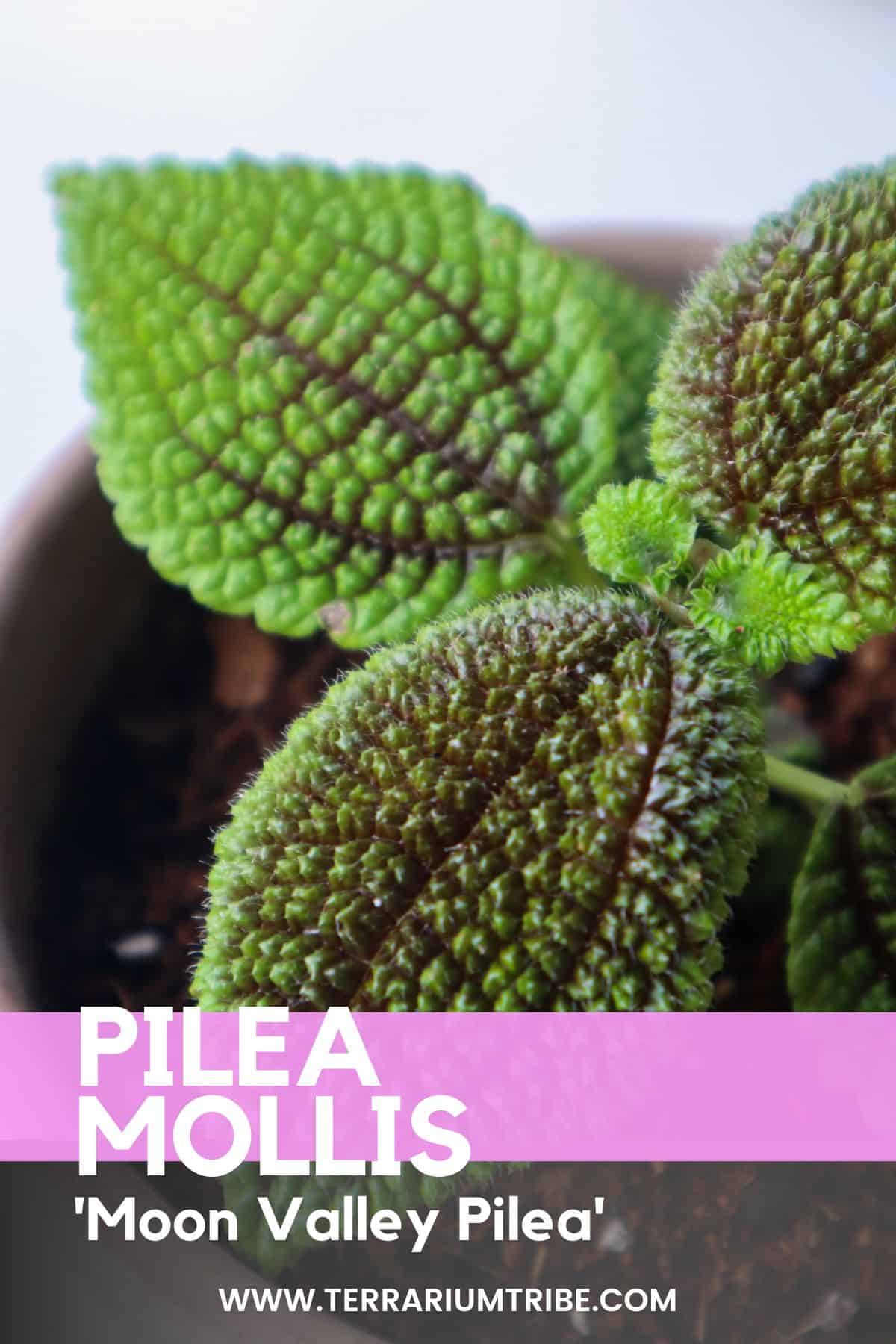
Pilea Mollis Spotlight – An Unsung Terrarium Hero
To better get to know this plant, let’s take a closer look at its names.
- ‘Moon Valley’ refers to the deep craters that run through its leaves.
- And mollis translates to ‘a covering of soft hairs.’
What does this mean? This plant’s stand-out feature is undoubtedly its texture.
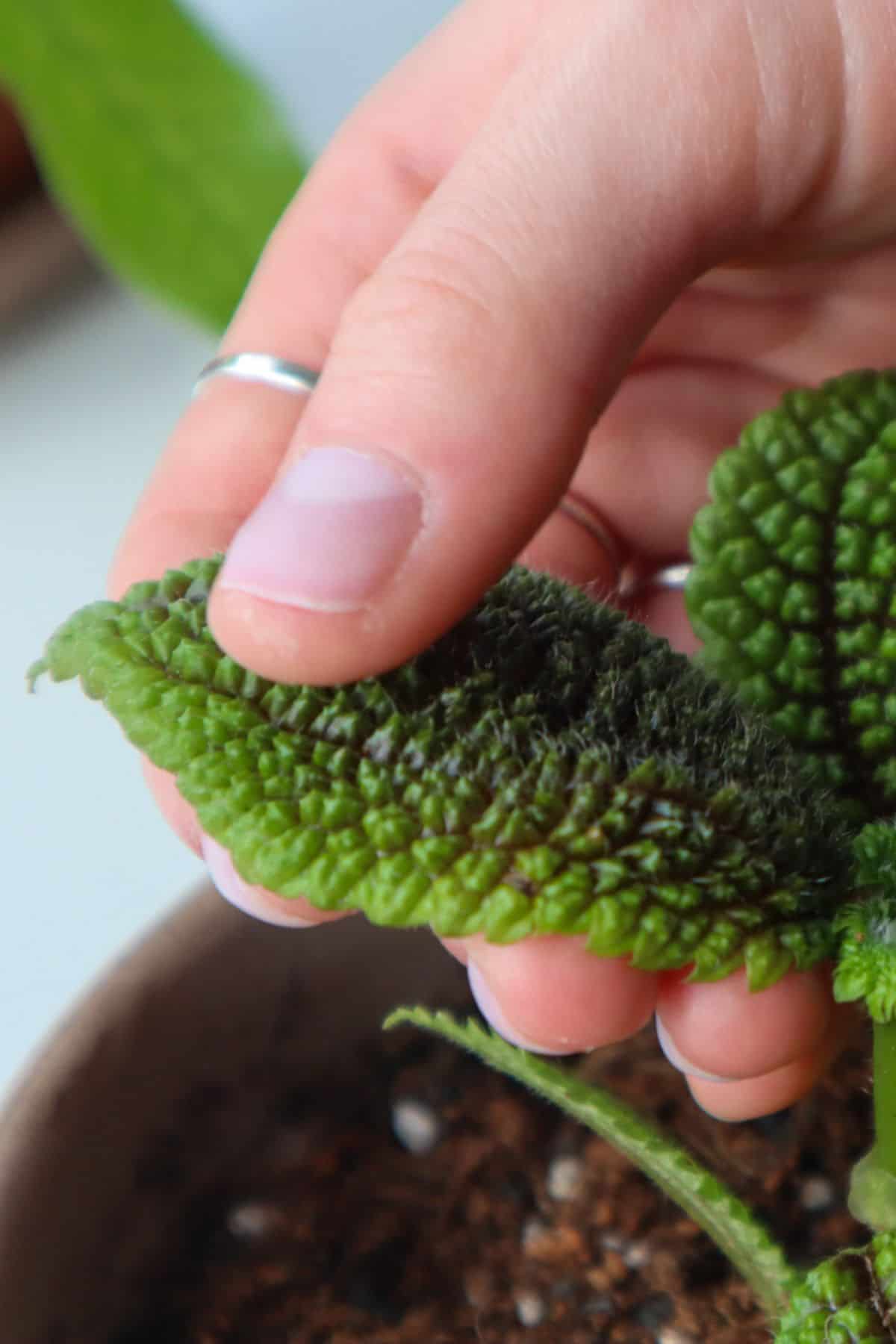
Naturally, this plant stands out just about anywhere you put it, but it shines in a terrarium.
When I first set out to create a terrarium, the first thing I look to create is contrast; the mollis makes that task effortless.
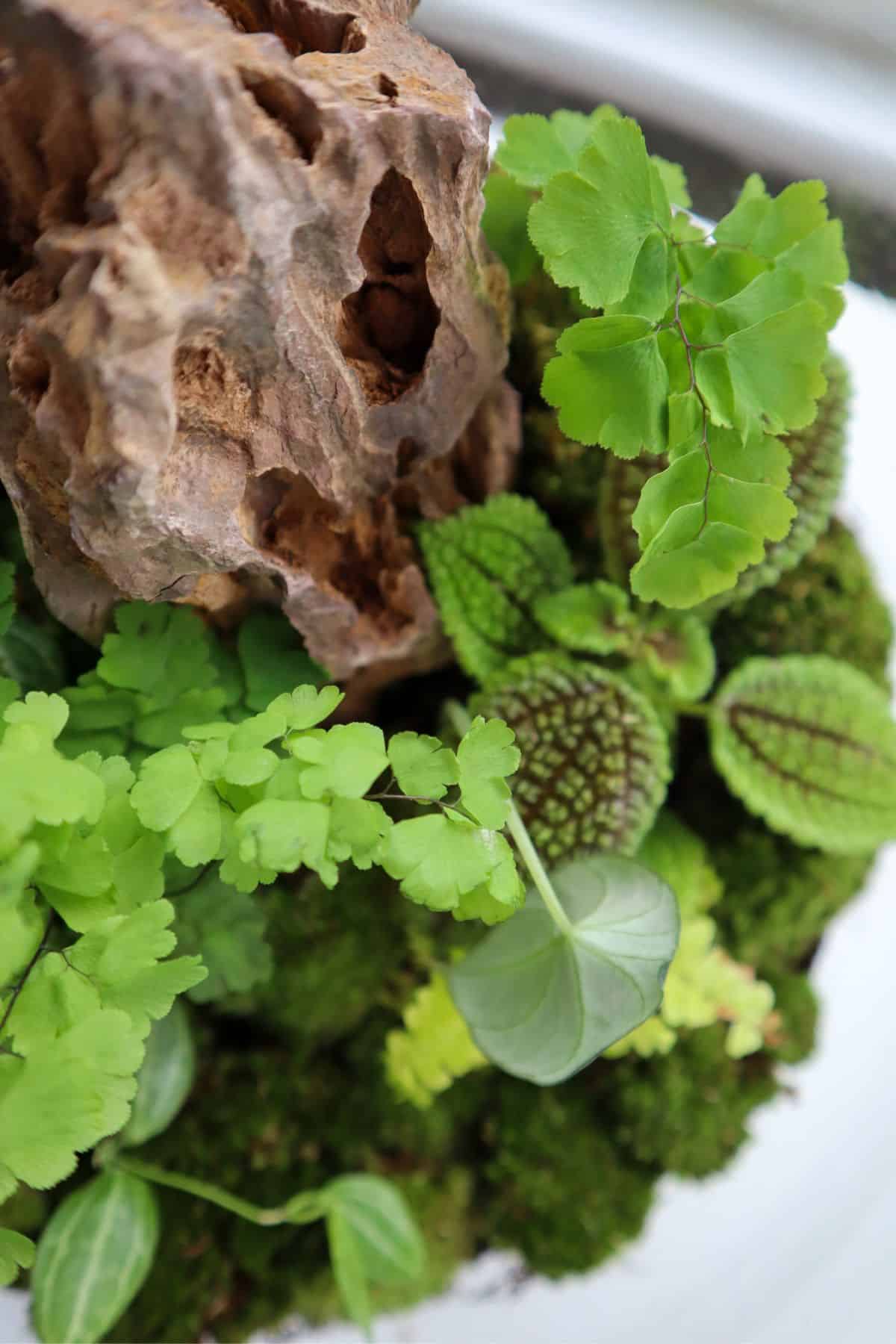
Ultimately, whether you want to put your plant in a terrarium or keep it as a houseplant to zhuzh up a dull corner, its fabulous look is unmatched in any other plant.
So what are we waiting for?
Where to Find the Pilea Moon Valley for Sale
See the links below to purchase from reputable terrarium plant shops and marketplaces (may include affiliate links).
Pilea Moon Valley Plant Care Guide
At a Glance
| Plant Type | Foliage |
| Lighting | Bright indirect light |
| Temperature | 60-80°F (15.5-26.5°C) |
| Watering | Moderate, even moisture |
| Humidity | Medium – high humidity (50-80%) |
| Growth | 2-10 inches |
Lighting
As with most plants found beneath the rainforest canopy, sheltered from the blazing sun, this plant enjoys bright but indirect light.
It can tolerate a couple of hours of direct sunlight, but be careful it doesn’t get any more.
Unfortunately, I’ve experienced first-hand just how disastrous it can be!
I left my terrarium with my Mum when I went on holiday, the UK had a heatwave while I was away, and I came back to this sad state of a plant…
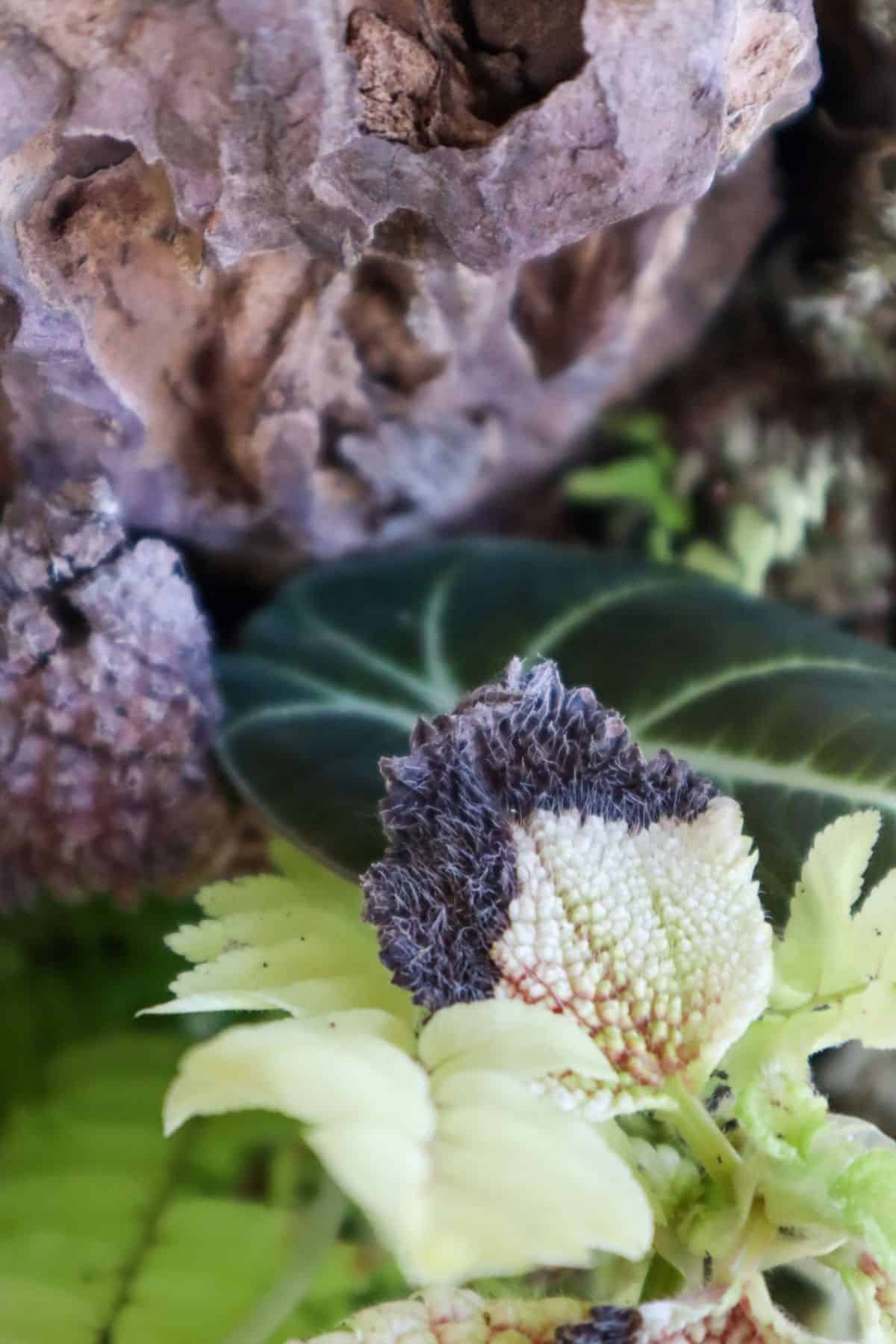
With that being said, too little light can result in stunted growth. Which isn’t a bad thing if you’re putting it in a terrarium – right?
A great option if you don’t have the perfect space is popping it in a spot that gets little natural light and supplementing with artificial light.
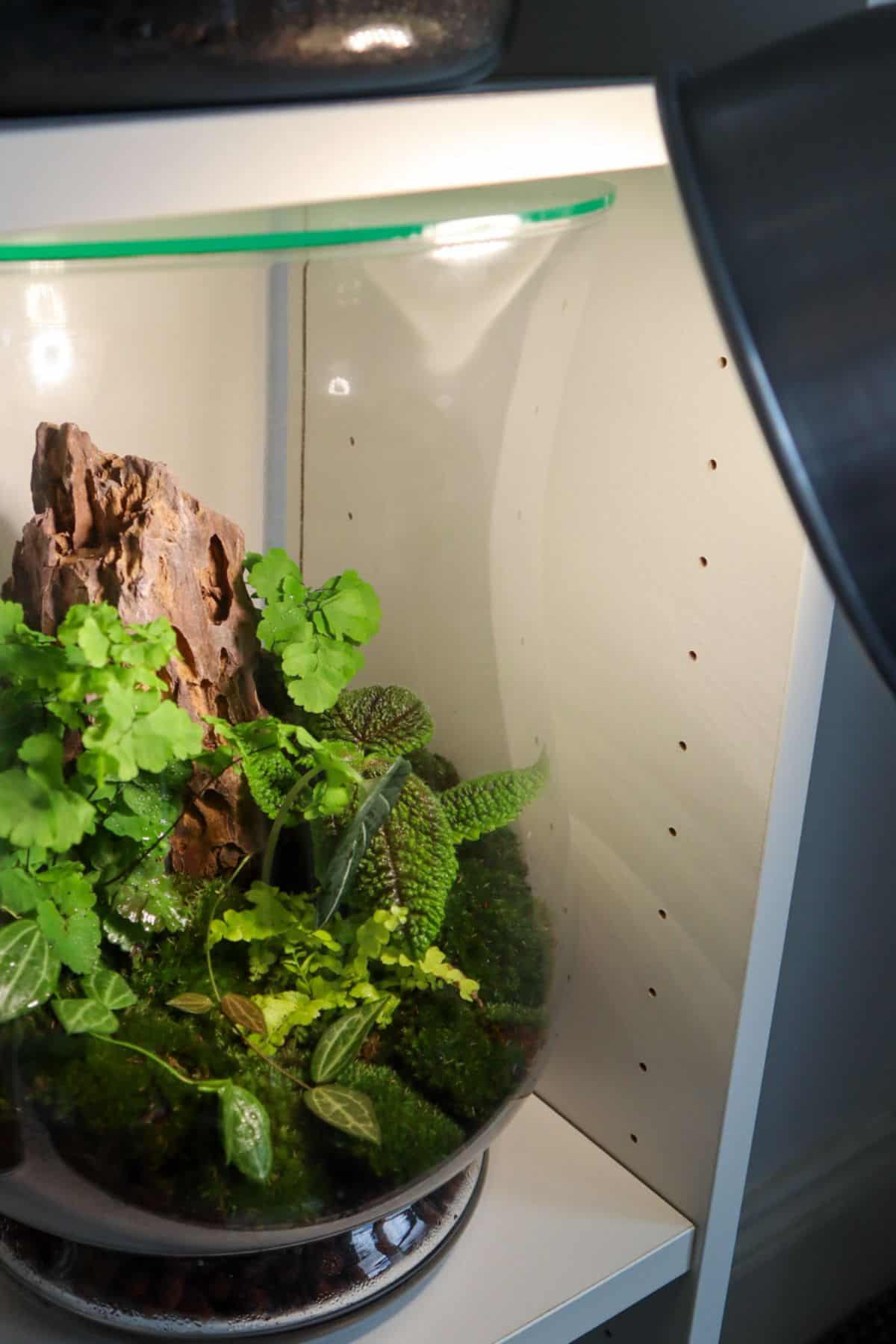
Watering
Pilea is a water-loving species and doesn’t like to dry out. Regular, even moisture is the way to go.
The best way to know it’s time to water is by checking the soil with your finger. The very top should be dry, but beneath the surface, you should still be able to feel a little moisture.
That being said, without adequate drainage, overwatering is not only a common problem but is practically inevitable, so make sure to have a pot with drainage holes or a false bottom in a terrarium.
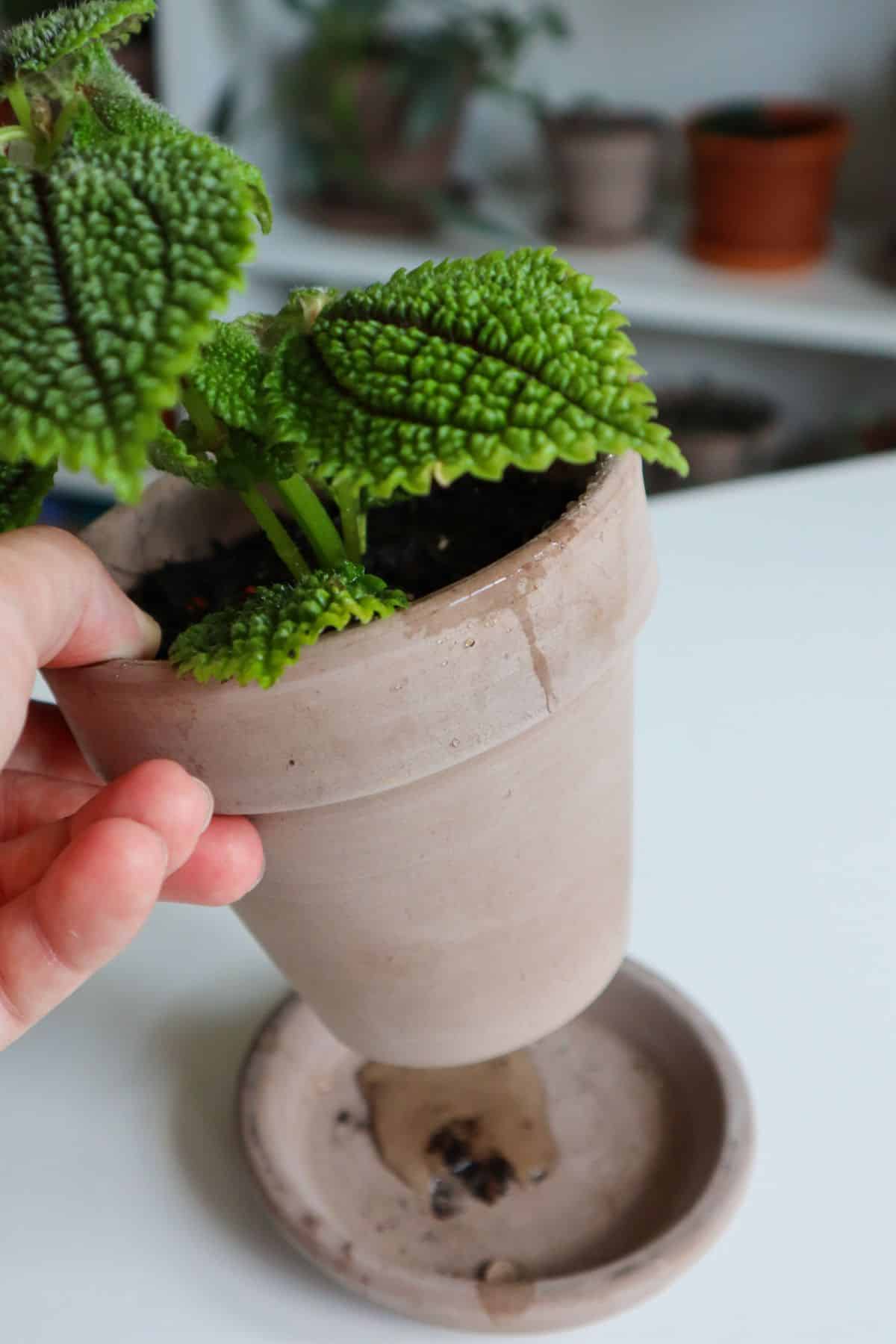
Soil/Substrate
To best support your plant’s watering needs, opt for an airy substrate base like coco coir, which is great for retaining moisture.
Potting soil is too dense and will compact too much to allow water to travel through, so avoid it if possible.
So add in lots of chunky extras to boost drainage and aeration – pumice, orchid bark, and tree fern fiber are some of my go-to’s.
👉 Check out our tropical terrarium mix for a balanced all-rounder.
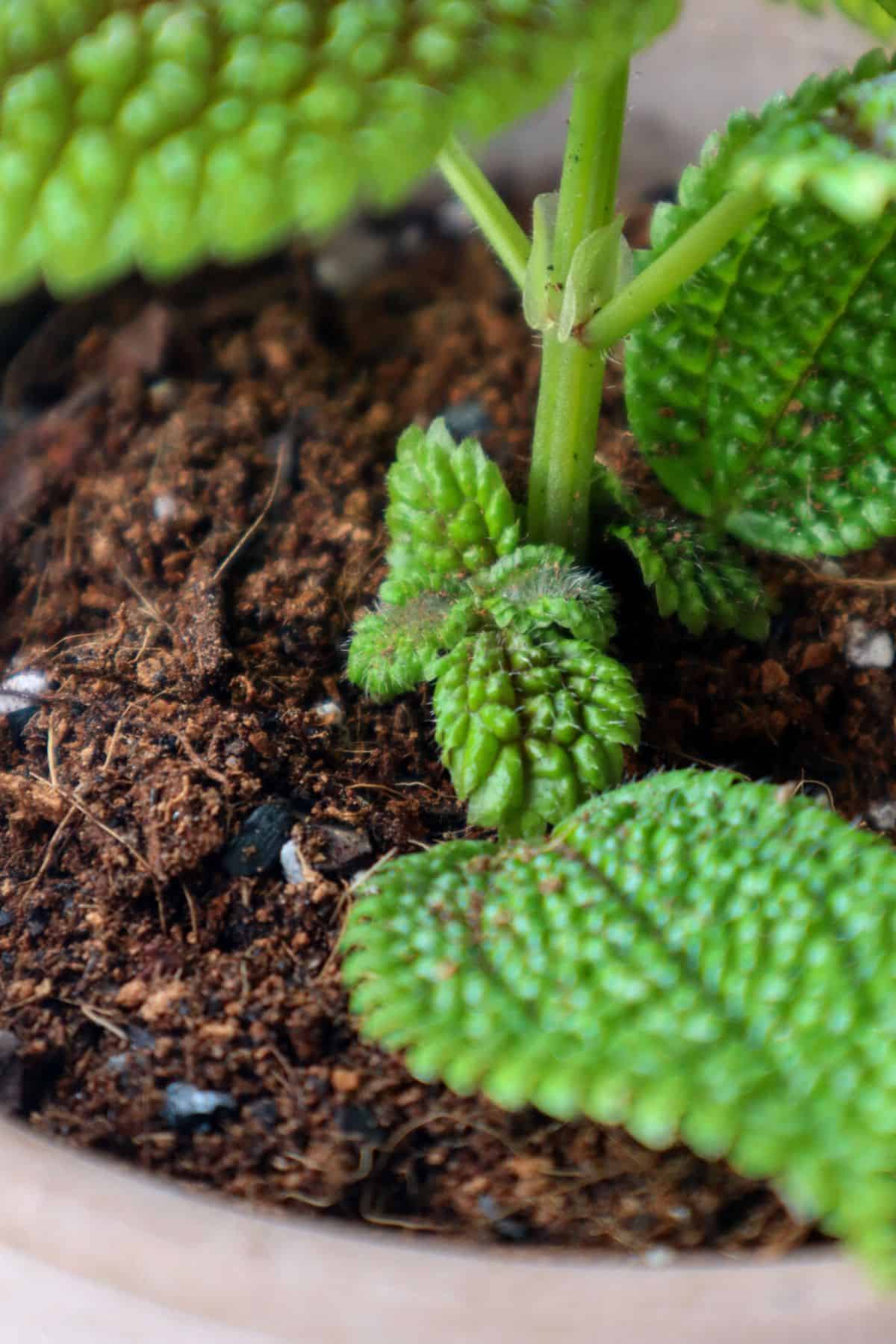
Temperature & Humidity
Unsurprisingly, for a plant that evolved in northern South America (most likely from Colombia or Venezuela), the mollis enjoys a super humid environment. Just like me.
It can tolerate average home humidity as low as 50% but will thrive with higher.
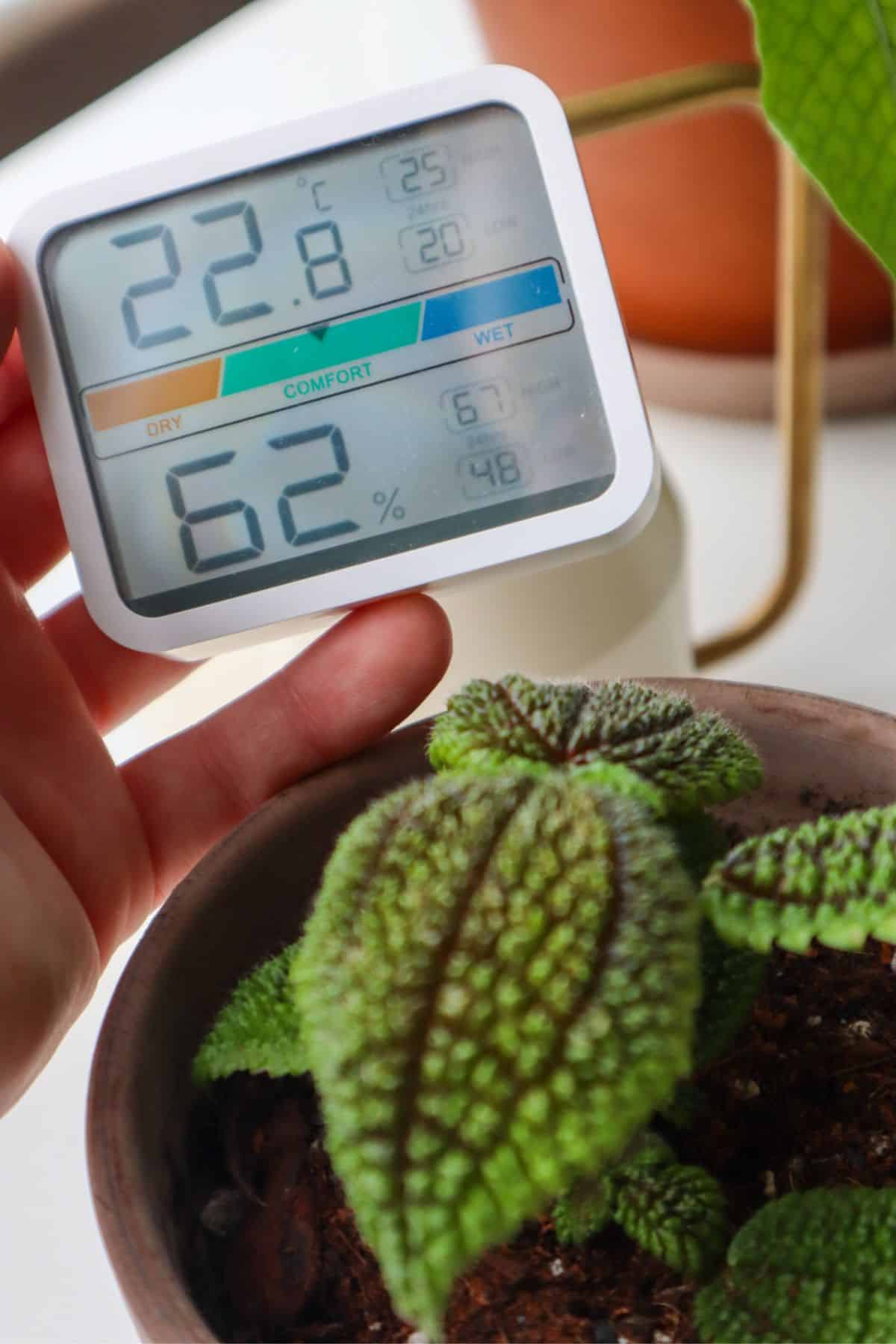
f your home is on the dry side, try grouping plants or leaving watering cans around the room to evaporate.
If not, putting it in a closed terrarium is a great way to satisfy these needs (and enjoy some horticultural DIY fun).
Average home temperatures around 60-80°F (15.5-26.5°C) will be absolutely fine.
Moon Valley Pilea Flowers & Growth
Native to the rainforest floor, this plant stays gorgeously compact as it grows. The leaves don’t get any larger; it doesn’t grow tall but remains low.
If it does get a little bushier than you’d like, trim as you deem appropriate. You can always use them for stem cuttings – but more on that in a moment.
And, it gets better kids! Tiny clusters of pale pink flowers? Yes please!

If you’ve been blessed by the flower gods, you can expect these blooms to arrive with the warm Summer weather!
Propagation
Get your scissors at the ready; the Moon Valley is ready and willing to multiply.
Simply snip yourself a cutting – around 2-3 inches in height is ideal – and remove the lower leaves, leaving the leaves at the very top.
Then you can put the cutting in water to root up, or provided the humidity is high enough, you can plant it directly into the soil.
This can be done in a terrarium or by putting a plastic bag over the pot.
Varieties & Similar Plants
With over 600+ members of the Pilea family, you’re spoilt for choice!
If you’re a fan of similar growth patterns and metallic tones, Pilea cadierei, and Pilea involucrata are great plants to look at.
In fact, even though the mollis and involucrata are completely different color palettes, they regularly get mixed up online.
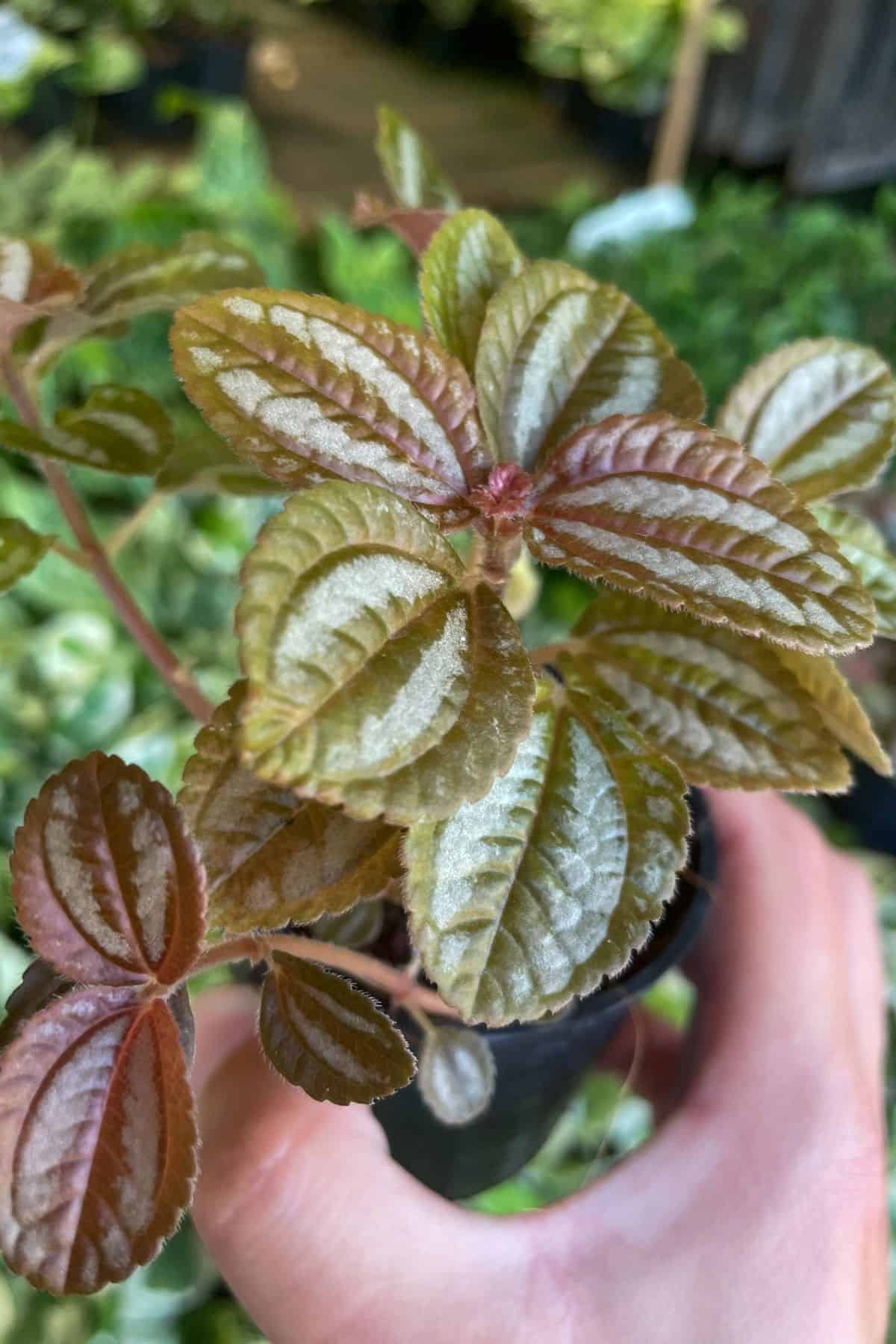
Why not venture into the whimsical world of tiny Pilea with Pilea glauca or Pilea depressa?
Of course, I need to mention the beloved Pilea peperomioides (Chinese Money Plant); no Pilea list would be complete without it.
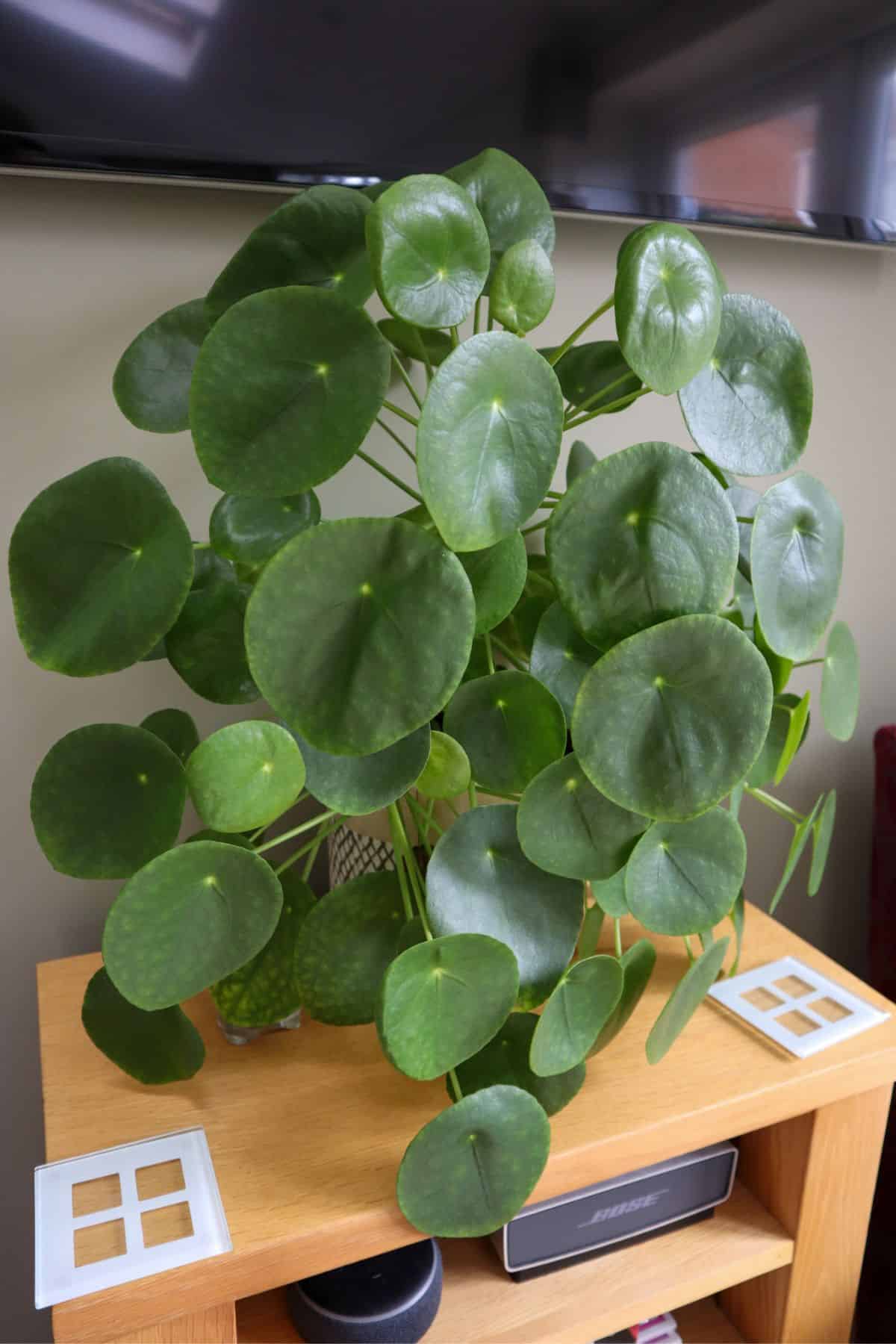
Pilea Moon Valley Toxicity
Luckily, Pilea Mollis is not considered toxic to cats, dogs, or humans. Though I can’t imagine eating hairy leaves is pleasant…
It’s worth bearing in mind that toxic substances (such as bug spray or fertilizer) could have made their way into the plant – even before you bought it.
It’s always worth being extra safe if there are little mouths around.
